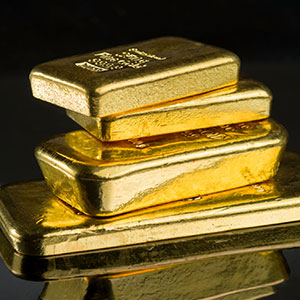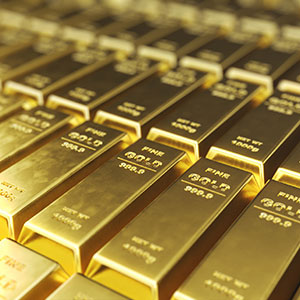
Gold went up! Then down! And now, it’s back up—but for how long?
Befitting these uncertain times, the yellow metal had a roller-coaster week, first crossing $2,000-an-ounce on Tuesday, then falling sharply on Wednesday, and then crossing the all-important $2,000 benchmark again on Thursday.
At the time of publication, the yellow metal’s spot price was $2,004 an ounce, after hovering just below $2,000 for most of the morning. This is the highest level gold has traded at in 19 months.
On Tuesday, the price of bullion settled at $2,043.30 an ounce, a near-record closing. (The metal’s all-time high closing price was $2,069.40, which it hit on Aug. 6, 2020.) At one point on Tuesday, the spot price crossed $2,070.
Then, on Wednesday, the metal fell to $1,988—a steep drop that illustrated the current volatility of the markets.
“Action across the global commodity markets in recent days is outside the range of anything that we have experienced in [decades],” Geetesh Bhardwaj, head of research at SummerHaven Investment Management, told Barron’s.
On Thursday, the price crossed the $2,000 mark overnight, and by midday, it flew past it again.
Analysts attributed the metal’s current rise to high inflation, as well as fears about the world situation in the wake of Russia’s invasion of Ukraine. (Russia is also a major producer of gold, and the current unrest could disrupt the gold supply chain.)
“Inflation and interest rates remained important drivers for gold,” said commentary from the World Gold Council, saying that while interest rates were on the rise, many still look at gold as a “safe haven” during times of tension.
“Nothing stokes the gold bugs like the risk posed by a war,” said Bhardwaj.
Meanwhile, a new group, the Global Gold Transparency Initiative, just launched, with an open letter warning companies that they need to take precautions to avoid Russian gold.
It noted that Russia appears likely to liquidate its gold and called on “all worldwide jewelry industry organizations to be vigilant. Verify your sources of gold. Contact your refiners and suppliers and tell them you expect them to double-check their sources of gold. Make it clear to your supply chain partners that you will not tolerate suppliers that assist Russia by buying its gold or using it in trade.”
It further urges jewelers to maintain an active anti–money laundering (AML) program with a rigorous know-your-counterparty practice.
(Photo: Getty Images)
- Subscribe to the JCK News Daily
- Subscribe to the JCK Special Report
- Follow JCK on Instagram: @jckmagazine
- Follow JCK on X: @jckmagazine
- Follow JCK on Facebook: @jckmagazine





